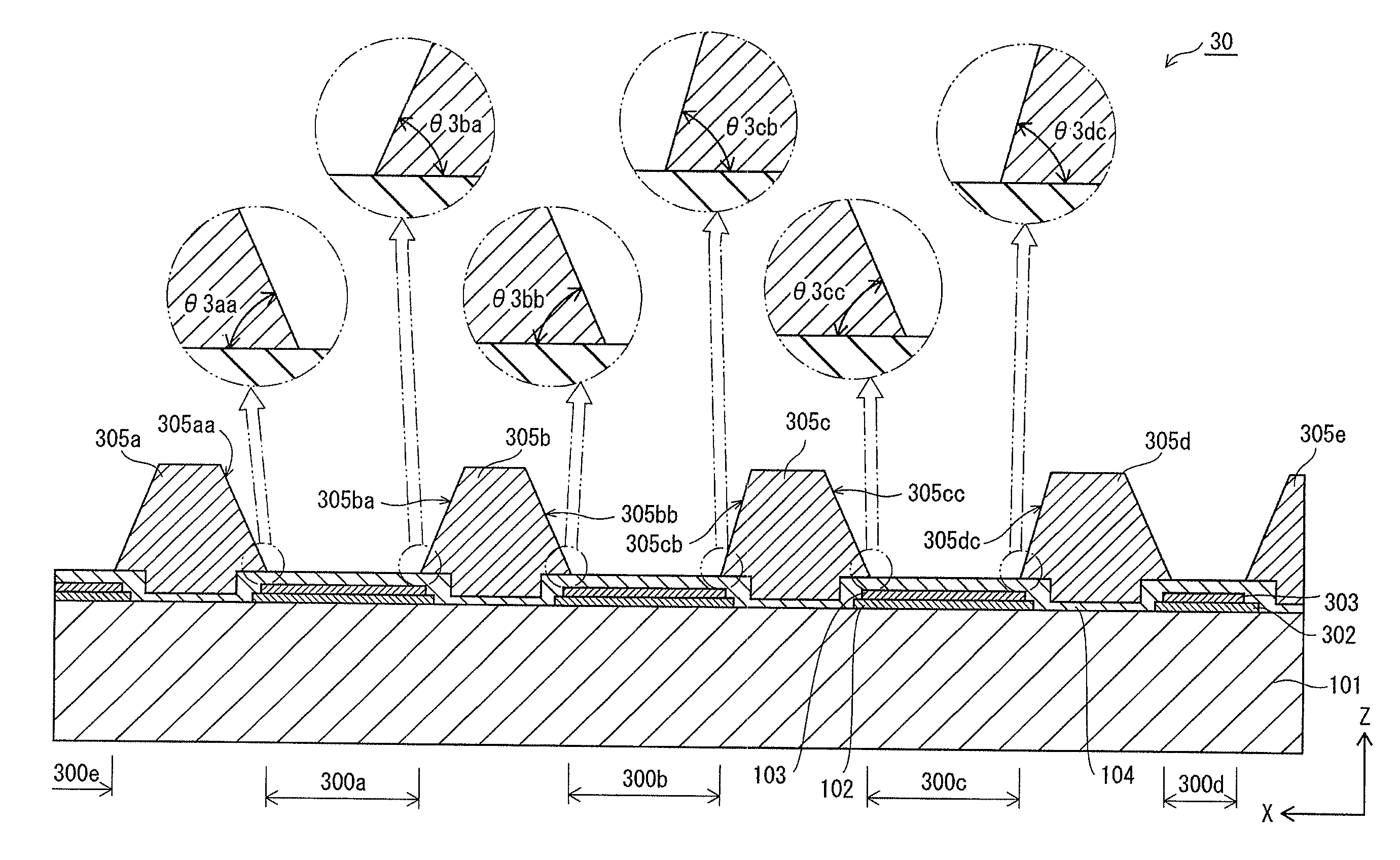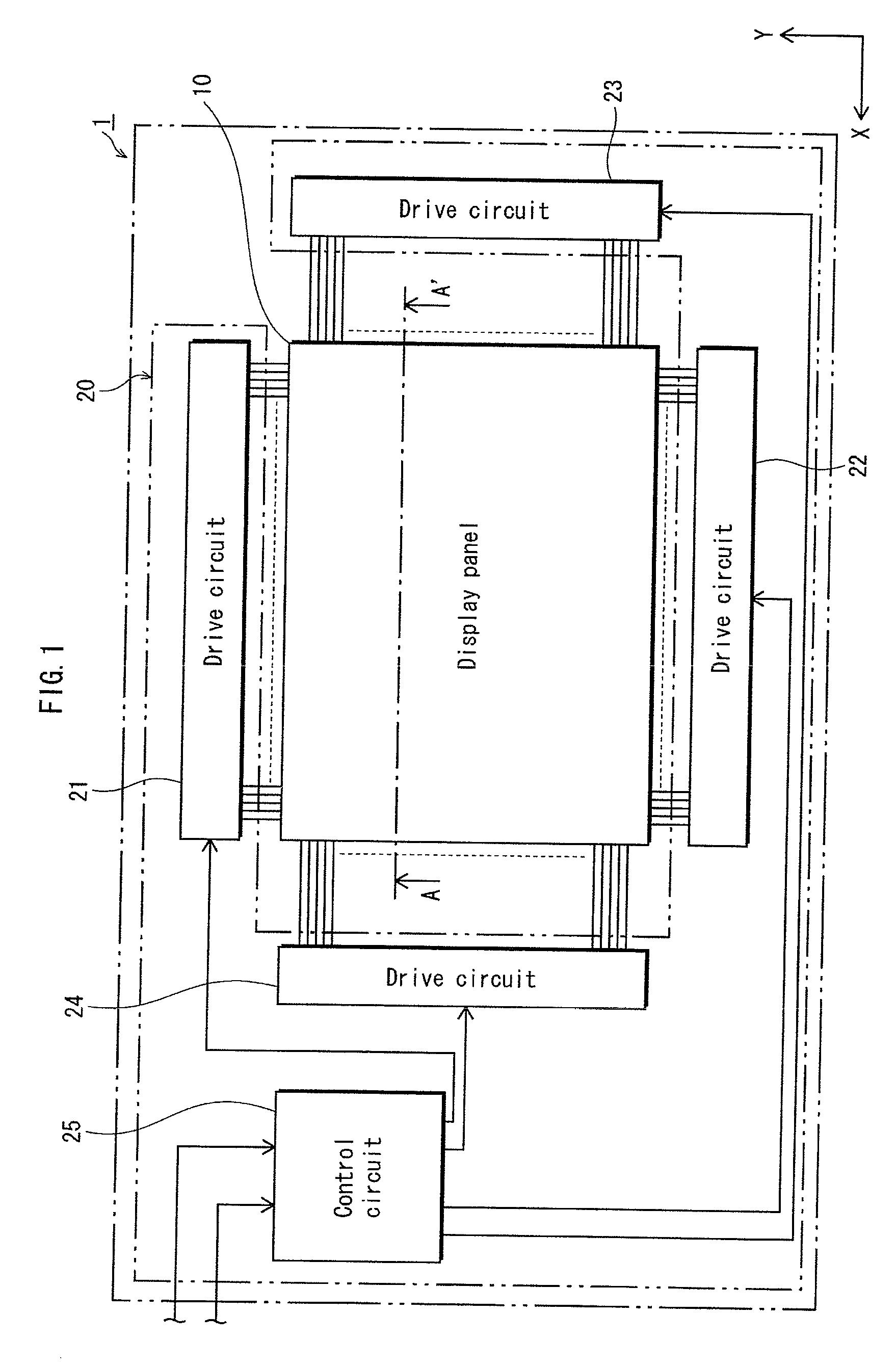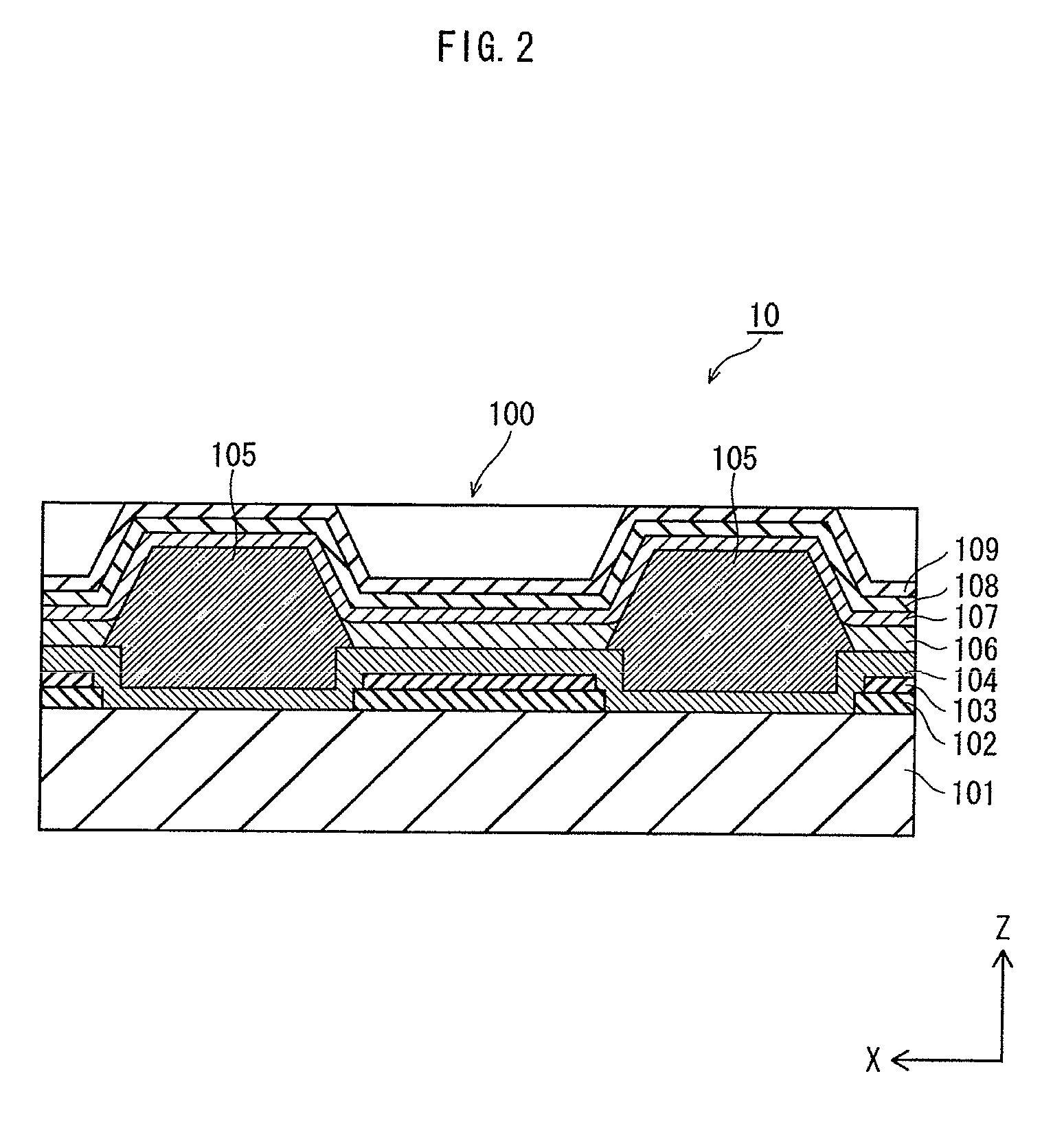Organic light-emitting panel, manufacturing method thereof, and organic display device
a technology of organic light-emitting panels and manufacturing methods, which is applied in the direction of discharge tube luminescnet screens, after-treatment details, crystal growth processes, etc., can solve the problem of difficult uniform layer thickness, and achieve the effect of reducing the film thickness of the organic light-emitting layer on the third light-emitting cell side, excellent light-emitting characteristics, and high ink vapor concentration
- Summary
- Abstract
- Description
- Claims
- Application Information
AI Technical Summary
Benefits of technology
Problems solved by technology
Method used
Image
Examples
embodiment 1
[Embodiment 1]
[0112]1. Configuration of Display Device 1
[0113]The overall structure of the display device 1 according to the present Embodiment is described with reference to FIG. 1.
[0114]As shown in FIG. 1, the display device (organic display device) 1 includes a display panel unit 10 and a drive control unit 20 connected to the display panel unit 10. The display panel unit 10 is an organic light-emitting panel that used the phenomenon of electroluminescence occurring in organic material and is composed of a plurality of pixels arrayed two-dimensionally in the X-Y plane direction.
[0115]The drive control unit 20 is composed of four drive circuits 21-24 and a control circuit 25.
[0116]Note that in an actual display device 1, the placement of the drive control unit 20 with respect to the display panel unit 10 is not limited in this way.
[0117]2. Structure of Display Panel 10
[0118]The structure of the display panel 10 is described with reference to FIG. 2. Note that, as an example, the d...
modification 1
[Modification 1]
[0190]Next, with reference to FIG. 13, Modification 1 of the manufacturing method of the display device 1 is described. FIG. 13 illustrates processes corresponding to processes illustrated in FIGS. 9C to 10A.
[0191]As shown in FIG. 13, first a bank material layer 1050 is formed to cover the hole injection transporting layer 104, and then a mask 503 is placed above the bank material layer 1050. The mask 503 is provided with light transmissive portions 503a, 503b, 503c1, 503c2, and 503d. The light transmissive portions 503a, 503b, 503c1, 503c2, and 503d are provided at locations corresponding to portions in which the banks 105a, 105b, 105c, and 105d are to be formed.
[0192]In the manufacturing method of the display device1 in Modification 1, width Wa of the light transmissive portion 503a, which corresponds to the left-hand side of the planned sub-pixel formation region 1000a, is defined by points Pa1 and Pa2 at the feet of the sidewalls 105aa, . . . of the bank 105a (se...
modification 2
[Modification 2]
[0198]Next, with reference to FIGS. 14A to 15B, Modification 2 of the manufacturing method of the display device 1 is described. FIGS. 14A to 15B illustrate processes corresponding to the processes illustrated in FIGS. 9C to 10B.
[0199]As shown in FIG. 14A, first a bank material layer 1050 is formed to cover the hole injection transporting layer 104, and then a mask 504 is placed above the bank material layer 1050. The mask 504 has openings 504a, 504b, 504c, and 504d corresponding to the portions at which banks 105 are to be formed.
[0200]The openings 504a, 504b, and 504d are formed to have the same width as the opening 501a in the mask 501 used in the manufacturing method of the above Embodiment.
[0201]On the other hand, a width Wc3 of the opening 504c located between the planned sub-pixel formation regions 1000b and 1000d in correspondence with the bank 105c that is to be formed (see FIG. 4) is set to be larger than a width that is defined by points Pc3 and Pc2 being ...
PUM
 Login to View More
Login to View More Abstract
Description
Claims
Application Information
 Login to View More
Login to View More - R&D
- Intellectual Property
- Life Sciences
- Materials
- Tech Scout
- Unparalleled Data Quality
- Higher Quality Content
- 60% Fewer Hallucinations
Browse by: Latest US Patents, China's latest patents, Technical Efficacy Thesaurus, Application Domain, Technology Topic, Popular Technical Reports.
© 2025 PatSnap. All rights reserved.Legal|Privacy policy|Modern Slavery Act Transparency Statement|Sitemap|About US| Contact US: help@patsnap.com



